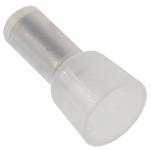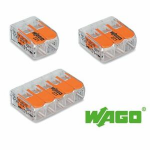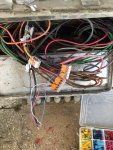DiamondWash
Well-known member
I recently got new doors for my self serve bays from GinSan and I noticed they used these permanent clear wire nuts that once they are crimped there is no way of removing them and reattaching the wires, so I ordered all new WAGO 221 connectors as seen in the 2nd picture below, why don't manufacturers use WAGO's I know WashWorld does now because it just makes wire connections so much easier to maintain and install. WAGO also makes a TON of other wire connecting devices to simplify electrical jobs.




Last edited:






